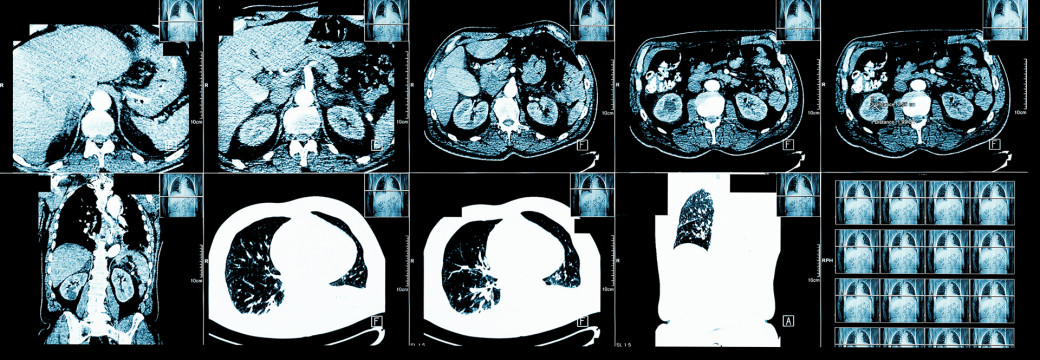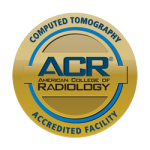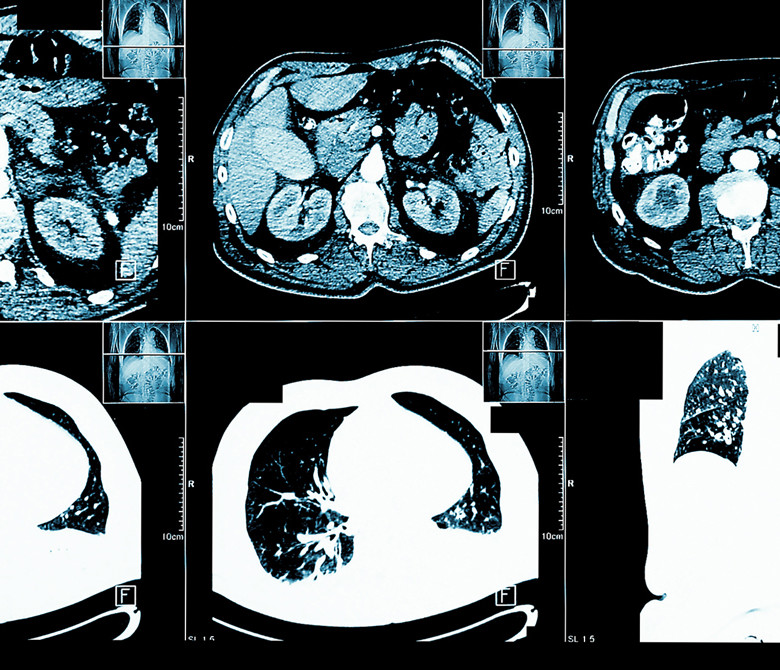Cardiac CT for Calcium Scoring

Cardiac computed tomography (CT) for Calcium Scoring uses special x-ray equipment to produce pictures of the coronary arteries to determine if they are blocked or narrowed by the buildup of plaque which is an indicator for atherosclerosis or coronary artery disease (CAD). This information can help evaluate whether you are at increased risk for heart attack.

What is Cardiac CT for Calcium Scoring?
Computed tomography, (CT or CAT scan), is a diagnostic imaging test that produces multiple images or pictures of the inside of the body.
The cross-sectional images generated during a CT scan can be reformatted in multiple planes, and can even generate three-dimensional images. These images can be viewed on a computer monitor and stored on a CD or DVD.
A cardiac CT scan for coronary calcium is a non-invasive way of identifying the presence, location and extent of calcified plaque in the coronary arteries. These vessels supply oxygen-containing blood to the heart muscle. Calcified plaque results when there is a build-up of fat and other substances under the inner layer of the artery. This material can calcify, which indicates the presence of atherosclerosis, a disease of the vessel wall, also called coronary artery disease (CAD). People with this disease have an increased risk for heart attacks. Over time, progression of plaque build up (CAD) can narrow the arteries or even close off blood flow to the heart. The result may be chest pain, sometimes called “angina,” or a heart attack.
Calcium is a marker of CAD, so the amount of calcium detected on a cardiac CT scan is a helpful prognostic tool. The findings on cardiac CT are expressed as a calcium score. Another name for this test is coronary artery calcium scoring or calcium scoring.
What are some common uses of the procedure?
The goal of cardiac CT scan for calcium scoring is to determine if CAD is present and to what extent, even if there are no symptoms. It is a screening study that may be recommended by a physician for patients with risk factors for CAD but no clinical symptoms.
The major risk factors for CAD are:
- high blood cholesterol levels
- family history of heart attacks
- diabetes
- high blood pressure
- cigarette smoking
- obesity
- physical inactivity
How should I prepare?
You will be instructed upon scheduling your appointment. In general no special preparation is necessary in advance of a cardiac CT examination. You should continue to take your usual medications, but should avoid caffeine and smoking for four hours prior to the exam.
You should wear comfortable, loose-fitting clothing to your exam. You will be given a gown to wear during the procedure.
Metal objects, including jewelry, eyeglasses, dentures and hairpins, may affect the CT images and should be left at home or removed prior to your exam. You may also be asked to remove hearing aids, removable dental work, underwire garments and body piercings, if possible.
Women should always inform their physician and the exam technologist if there is any possibility that they may be pregnant.
How does the procedure work?
When CT scanning is performed, bones appear white and organs such as the heart or liver show up in shades of gray and air appears black. During the scanning, numerous x-ray beams and a set of electronic x-ray detectors rotate around you, measuring the amount of radiation being absorbed throughout your body. During this rotation, the examination table is moving through the scanner, so that the x-ray beam follows a spiral path. A computer processes this large volume of data to create two-dimensional cross-sectional images (slices) of your body, which are then displayed on a monitor. This technique is called helical or spiral CT.
When the image slices are reassembled by computer software, the result is a very detailed three-dimensional (3-D) view of the body’s interior.
How is the procedure performed?
Our technologist will position you on the CT examination table, usually lying flat on your back. Straps and pillows may be used to help you remain still and in the correct position during the exam.
During CT calcium scoring electrodes (small, sticky discs) will be attached to your chest and to an electrocardiograph (ECG) machine that records the electrical activity of the heart. This makes it possible to record CT scans when the heart is not actively contracting.
Any motion, whether breathing or body movements, can lead to artifacts on the images. This loss of image quality can resemble the blurring seen on a photograph taken of a moving object. Due to this, you may be asked to hold your breath at various times during the exam.
When the examination is completed, our technologist will ask you to wait so they can verify that the images are of high enough quality for accurate interpretation.
The entire procedure including the actual CT scanning is usually completed within 10 minutes.
What will I experience during and after the procedure?
This CT exam is painless, fast and easy, and after the CT exam, you can return to your normal activities.
Who interprets the results and how do I get them?
A radiologist with expertise in supervising and interpreting cardiac radiological examinations, will analyze the images and send a report electronically/fax to the physician who referred you for the exam. Your physician will discuss the results with you.
Follow-up examinations may be necessary, and your doctor will explain the reason why another exam is requested and when it should be scheduled.
What are the benefits vs. risks?
Benefits
- Cardiac CT for calcium scoring is a convenient and noninvasive way of evaluating whether you may be at increased risk for a heart attack.
- The exam takes little time, causes no pain, and does not require injection of contrast material. No radiation remains in a patient’s body after a CT examination.
- X-rays used in CT calcium scoring scans have no significant side effects. The radiation dose is very low.
Risks
- There is always a slight chance of cancer from excessive exposure to radiation. However, the benefit of an accurate diagnosis far outweighs the low risk.
- The effective radiation dose for this procedure is low.
- Women should always inform their physician and x-ray or CT technologist if there is any possibility that they are pregnant.
- CT scanning is, in general, not recommended for pregnant women unless medically necessary because of potential risk to the baby in the womb.
- A high calcium score may sometimes be followed by other diagnostic tests for heart disease.
Please visit www.Radiologyinfo.org for additional information on this procedure.

